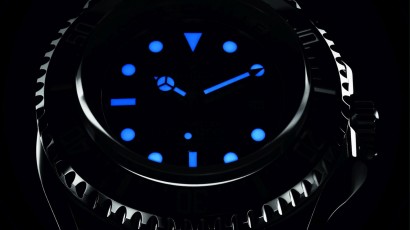
Before Buying A Waterproof Watch, Read This

Rolex
“From those early days of diving to today, we have seen an increasing race to the depths between watch companies, for whom an abyssal depth rating is a sign of prowess and ruggedness.“
At sea level, the air around us exerts a little over 6.3 kilograms per square inch. Significant, but we’re used to it, and everything around us, including our wristwatches, can easily survive this mild pressure. But dive underwater — even a few feet — and the water itself pushes inward, wanting to crush any air space available, like our lungs or a watchcase. At only 10 metres of depth, the pressure is already double what we experience on the surface. For divers, this is not a problem if they are breathing compressed air that is equal to the pressure of the water. But for the diver’s watch, the vulnerable movement must be protected by gaskets, a metal case and a thick crystal.
Early wristwatches were highly susceptible to moisture, not to mention dust, thanks to their snap-back cases and imperfect leather gaskets. Then, in 1926, the Rolex watch company introduced a radical new design that revolutionised the watch industry. It called it the Oyster case, at once conjuring up the sea and also the tightly-closed maw of the creature for which it was named. The concept was simple: A threaded back that screwed tightly onto the case, effectively sealing out water. Later, Rolex introduced the double-gasketed screw-down TwinLock crown, which addressed the other Achilles heel of a watch — the crown. When scuba diving gained popularity in the 1950s and ’60s, Rolex and countless other watch brands brought out “waterproof” dive watches that could not only survive underwater but be a legitimate instrument for the diver. The “depth race” was on.
From those early days of diving to today, we have seen an increasing race to the depths between watch companies, for whom an abyssal depth rating is a sign of prowess and ruggedness. It is not uncommon to see watches rated to depths down to 1,000, 2,000, even 4,000 metres, though no man would dive that deep, never mind survive. These depth ratings are achieved through thicker and thicker watchcases made from steel or titanium in most cases, Coke-bottle-bottom crystals and multiple synthetic gaskets and crown protection mechanisms.
So what is a suitable depth rating? It depends on where you plan to take your watch. Certainly, an impressive depth rating can be a sign of durability and a rugged build. But the NASA-tested and approved Omega Speedmaster that accompanied astronauts on spacewalks and a trip to the moon was rated for only 30 metres. The international standard for dive watches, ISO 6425, states that to be classified as such, a watch must be rated to a minimum of 100 metres. And indeed, the great majority of divers are not descending past 100 feet, never mind metres. Yet, to be safe, most dive watches are rated to at least 200 metres, which gives an adequate safety margin, especially as gaskets age.
But what if you’re not a diver? That 30-metre-rated Speedmaster you have should handle life’s dampness, whether it be washing the dishes, walking in the rain or splashing down in the Pacific in a space capsule. If you plan to do a lot of swimming or water sports, watches rated to 100 metres or above will cut it. Never mind what some people say about waving your arms underwater (that it adds to the water pressure). It’s negligible.
And if you’re welding oil pipelines deep under the North Sea? Well, then, you, sir, are one of the few who can justify that 3,900 metre-rated Rolex DeepSea Sea Dweller. Wear it proudly. Just be sure to have the gaskets replaced every year, lest that insidious water pressure find its way in.
